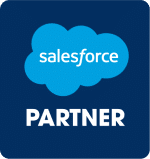Whether you are a startup or an enterprise-level organisation, scaling internationally represents a significant opportunity to grow for your business. However, it can be a difficult one to crack. As your business expands into multi-product groups and/or markets, a key inhibitor can be your CRM and how it scales with your business.
Working with multi-market businesses in the retail and media spaces, we see the challenges first-hand. Each product group or market can have their own requirements and creating customisations to your CRM can add significantly to the total cost of ownership/management. So defining a sustainable approach that enables both speed to market and sustainability is key. We want to detail some of the challenges and how we help to solve them for businesses we work with.
Challenges when managing a multi-market CRM solution
1. Integrating disparate systems across business units or markets
For more mature businesses, a lot of legacy systems already exist which can be a mix of technologies between cloud and on-prem solutions. This in itself creates significant challenges around defining a solution that works for all as well as aligning conflicting approaches between different teams. This leads to decisions whether you can build on what already exists or start again. This can depend on the number of integrations that exist and if there is a credible solution that exists in the business.
2. It’s not just about technology
Senior management teams typically know that digital transformations (which CRM is a subset of) do not just involve improving the technology itself but also processes within a business and training teams to adopt and use the new tools. This is the more significant challenge and one which is also significantly underestimated. We find that a strategy initiated from the business rather than from the technology side of the business works more effectively but typically it can be the other way round. This can mean that sometimes the commercial reasons are not considered first, and businesses can implement technology for technology’s sake. It is important to always have a clear commercial focus as success from CRM transformation with help build more support for strategies going forward.
3. Collaboration
Getting one business unit or business working together can be challenging enough. Getting collaboration across markets and business units can be dogged by internal politics, misaligned goals and communication challenges. Collaboration is key to identifying the best opportunities for the business by learning from the experiences of similar businesses across markets. Businesses must both allow enough time and resources to facilitate collaboration but also must align teams’ goals and targets so they are focused on the right outcome.
This needs to happen at multiple organisational levels for international businesses which is the reason these strategies tend to evolve over time.
4. Central vs Local, matrix organisations
This is a consistent challenge that arises as different areas of a business try to identify the best way to drive business growth, sustainability whilst giving flexibility to teams to drive success. The challenge is there is no right or wrong answer here, however, there will always be an organisational structure that best fits the goals, ambitions of the CRM and the business. Some of the considerations include:
– Where does the business want to be in 10 years? Will the proposed structure of the CRM team enable this success?
– Are products and services consistent across market or business units? Can the business benefit from economies of scale by centralisation? Are there revenue opportunities by offering CRM functionality to markets that may be smaller and have not implemented new strategies yet?
– Where should strategy, business analysis and implementation be located? What are the capabilities within the organisation that can take on these functions? Is the business willing to invest in a central function to help facilitate collaboration across markets?
– If the technology stack were to be localised, what impact will this have on the total cost of ownership and the ability for the business to scale at speed? Can the business deliver CRM quickly without some level of centralisation?
These are all pretty complicated questions that need buy-in and support at the c-level, which is something we talk about when we look at how to make CRM a success for your business.
5. Lack of capabilities
Businesses need to assess both their existing capabilities and what they need for the future. Lack of foresight can lead to project delivery problems very quickly which can destroy both the credibility and success of a programme.
How do I make multi-market CRM a success?
Multi-market CRM typically involves a significant number of teams, resources and time. The technology itself is really a smaller part that changes. The process and people changes require a business to undergo organisation change which can be challenging without the right governance and organisational structure in place.
At Trigg, there are 3 key things we create for CRM transformation projects to ensure success:
1. Building the business case and business buy-in
2. Capability gap analysis and organisational change plan
3. Building a roadmap and a governance team
The challenges of resourcing
There’s more to Salesforce than just the implementation. Salesforce, like any tool, lives, breathes and unlocks growth in your business, but only if managed correctly. Do you have an effective strategy in place to maximise your return on investment over time? Who will you employ (or allocate) to manage it? Do they have Salesforce experience? If so, what experience? Will their existing skills cover all bases (products), or will you need to invest in training? The platform itself requires a fair bit of love and affection to unlock greater benefits over time, so ensuring that your organisation is adequately equipped is a must.
There are two key actions you can take to ensure your business is adequately resourced: ensure a strategic roadmap is in place and that your employees have the operational-know how and time required to manage the platform on an ongoing basis.
Building the business case and business buy-in
CRM transformations involve a process of continually improving over time and need a whole team bought into the strategy to see success. Aligning disparate approaches and strategies as well as setting business goals, is the first task to establishing a framework of success.
The benefits of CRM can be multifaceted however we tend to focus organisations on a couple of key metrics that can resonate with a wide range of stakeholders.
These could include:
1. £ million in white space opportunities
2. % opportunity in revenue-driving opportunities from CRM
3. % saved from economies of scale
Alongside building the business case is building buy-in at different levels of the organisation. A mistake will be to only focus on the c-level team. Given CRM touches so many parts of a company it is important to look at how to engage key stakeholders in the wider organisation, so they can be brought along on the journey and can help champion the success of the programme.
Capability gap analysis and organisational change plan
CRM strategies can be difficult to manage as they require the efficient operation of a series of processes. If one of these processes fails, the whole experience can be damaged. Hence creating a business capability gap analysis which helps identify where a business lacks skills, resources and what changes are needed for success.
31% of people surveyed in the State of Digital Transformation report indicated a lack of digital talent and expertise as a significant barrier to the success of transformation activities. We have seen first-hand projects stall when one part of the process or the technology is missing the right capabilities to execute a task.
Building a roadmap and a governance team
The roadmap and the governance plan area are the glue that sets apart projects that succeed or fail.
Creating the right governance structure is important for both the delivery of the technology and for the implementation of the organisational change required by a business. Typically for large multiple markets or team projects, a steering committee will be set up which would help with:
1. Championing the business change
2. Flag risks and challenges seen in markets or teams
3. Communicate success and changes to wider teams
4. Help collect requirements from the teams
5. Help organise resources to provide input on implementations to obtain the best result possible
Multi-market or multi-team CRM in itself is its discipline and is significantly helped through having experts who have experienced the challenges and problems previously, as any mistakes can be very costly and damage the credibility and impact of important CRM programmes. Following the suggested principles around building a business case and buying, assessing and bringing in the right capabilities and building the roadmap and governance plan will start businesses on the right track to success.
Looking for support developing or implementing your multi-market CRM strategy? Get in touch on +44 203 239 8492 or at hello@triggdigital.com.
- Take It Global: Developing A Successful Multi-Market CRM Strategy - March 10, 2022
- 4 challenges in B2B marketing and 10 tips to help - February 3, 2021



